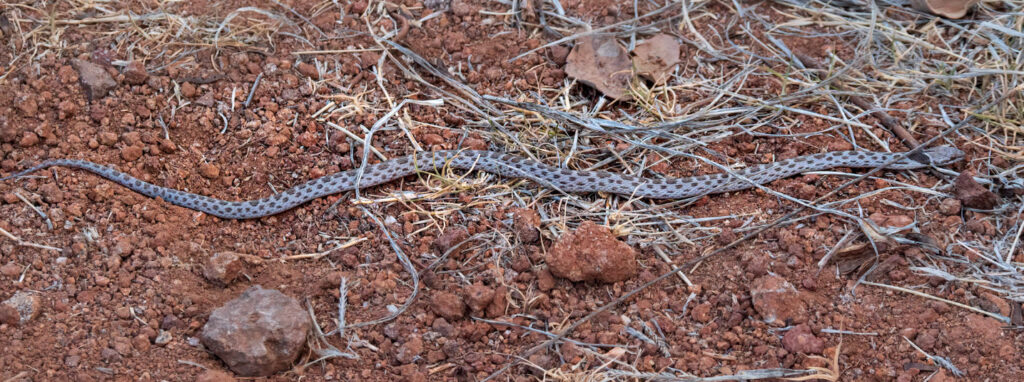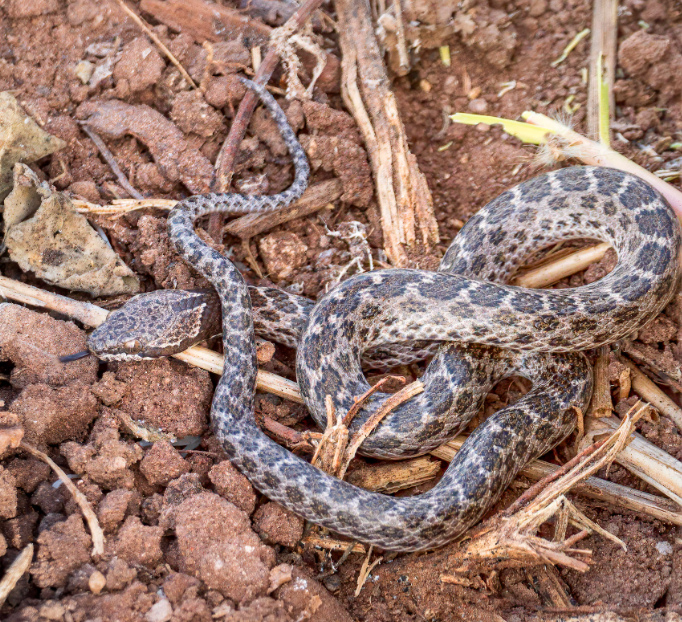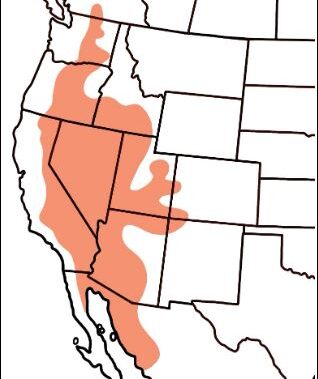Desert Nightsnake, Hypsiglena chlorophaea
 Desert Nightsnake, Hypsiglena chlorophaea. Photograph taken within a residential community in the greater Alamos area, Alamos, Sonora, May 2018. Photograph and identifications courtesy of David F Smith, Alamos, Sonora.
Desert Nightsnake, Hypsiglena chlorophaea. Photograph taken within a residential community in the greater Alamos area, Alamos, Sonora, May 2018. Photograph and identifications courtesy of David F Smith, Alamos, Sonora.
 Desert Nightsnake, Hypsiglena chlorophaea. Photograph taken within a residential community in the greater Alamos area, Alamos, Sonora, May 2018. Photograph and identifications courtesy of David F Smith, Alamos, Sonora.
Desert Nightsnake, Hypsiglena chlorophaea. Photograph taken within a residential community in the greater Alamos area, Alamos, Sonora, May 2018. Photograph and identifications courtesy of David F Smith, Alamos, Sonora.
The Desert Nightsnake, Hypsiglena chlorophaea, is a member of the Colubridae family of North American Racers, Coachwhips, and Whipsnakes. The Colubridae family comprises two-thirds of the world’s snake population with one thousand seven hundred sixty species placed in two hundred forty-nine genera. Many Colubrids are classified as venomous but very few are considered to be dangerous to humans. There are nine species in the Hypsiglena genus. The Desert Nightsnake is known in Mexico as Serpiente Nocturna Del Desierto.
Desert Nightsnakes are small and slender, ranging in size from 30 cm (12 inches) to 66 cm (2 feet 2 inches) in length. They have vertical pupils, 21 rows of smooth dorsal scales, and a divided anal plate. Sexual dimorphism is displayed with females growing to a larger size than males. Although, males possess proportionally longer tails. They are tan or gray dorsally with 50 to 70 dark mid-dorsal blotches that often appear to be two adjoining rows of offset blotches. Smaller, dark blotches mark their sides. Their venter is white or cream and unmarked. They have a dark neck collar that may be broken by one or two light stripes. Dark blotches mark the sides of their neck and extend downward and back from their eyes, sometimes joining the neck collar. In southeastern Sonora, some individuals possess a white collar anterior to their dark neck collar. Desert Nightsnakes have enlarged, ungrooved teeth in the rear of their upper jaws that help to deliver neurotoxins and hemorrhagic compounds produced in their Duvernoy’s gland to prey items. To effectively deliver these compounds, they chew their venom into the wound.
Nocturnal and crepuscular, Desert Nightsnakes are rarely encountered during the day. At night, they can be found on roads through rocky terrain. They seek shelter in crevices in rocky outcrops, under surface objects, and in mammal burrows. Females lay 3 to 9 eggs in June and July. Eggs are deposited in crevices in rocky accumulations. Occasionally, mammal burrows may be used as nesting sites. Hatchlings emerge approximately 2 months later. Desert Nightsnakes consume lizards, snakes, reptile eggs, amphibians, and some arthropods. They are preyed upon by owls, nocturnal mammals, and other snakes. When threatened or harassed, they will sometimes pull themselves into a very tight coil with their head in the center. The Desert Nightsnake is poorly studied with very limited information available about their lifestyle and behavioral patterns including specific details on age, growth, longevity, movement patterns, diet, habitat use, and reproduction.
Desert Nightsnakes range from south-central British Columbia, south through Washington, Oregon, southern Idaho, eastern California, Nevada, Utah, western Colorado, and much of Arizona. In Mexico, their range extends south through Sonora and into the northern tip of Sinaloa and southwestern Chihuahua. They inhabit arid and semiarid plains, canyons, hillsides, deserts, grasslands, shrublands, savannas, and woodlands. They are most commonly encountered at lower elevations. They prefer rocky, dissected, or hilly terrain with sandy or gravelly soils.

The Desert Nightsnake may be confused with the Sonoran Lyresnake, Trimorphodon lambda (much larger in size with large and protuberant eyes with a distinct dark “V” mark on the dorsal side of their head behind their eyes and they lack the lateral dark blotches and elongated dark blotches that are present on the Desert Nightsnake).
From a conservation perspective, the Desert Nightsnake is currently considered to be of Least Concern due to their wide distribution, large number of locations, presumed large population size, and lack of major threats. Desert Nightsnakes seldom bite when handled and are likely too small to deliver a venomous bite to humans. Regardless, Caution should be used if encountered and their bite should be avoided.